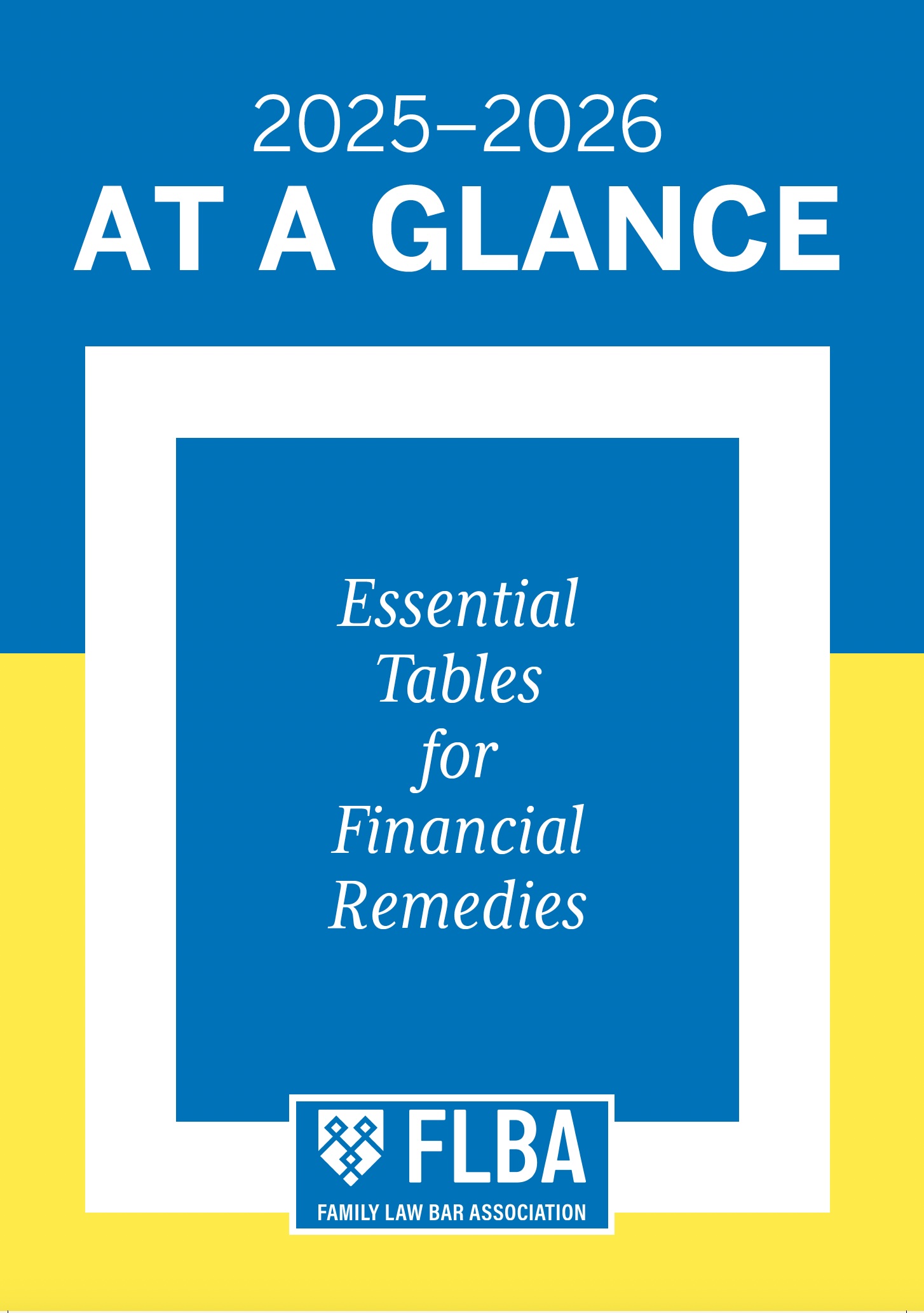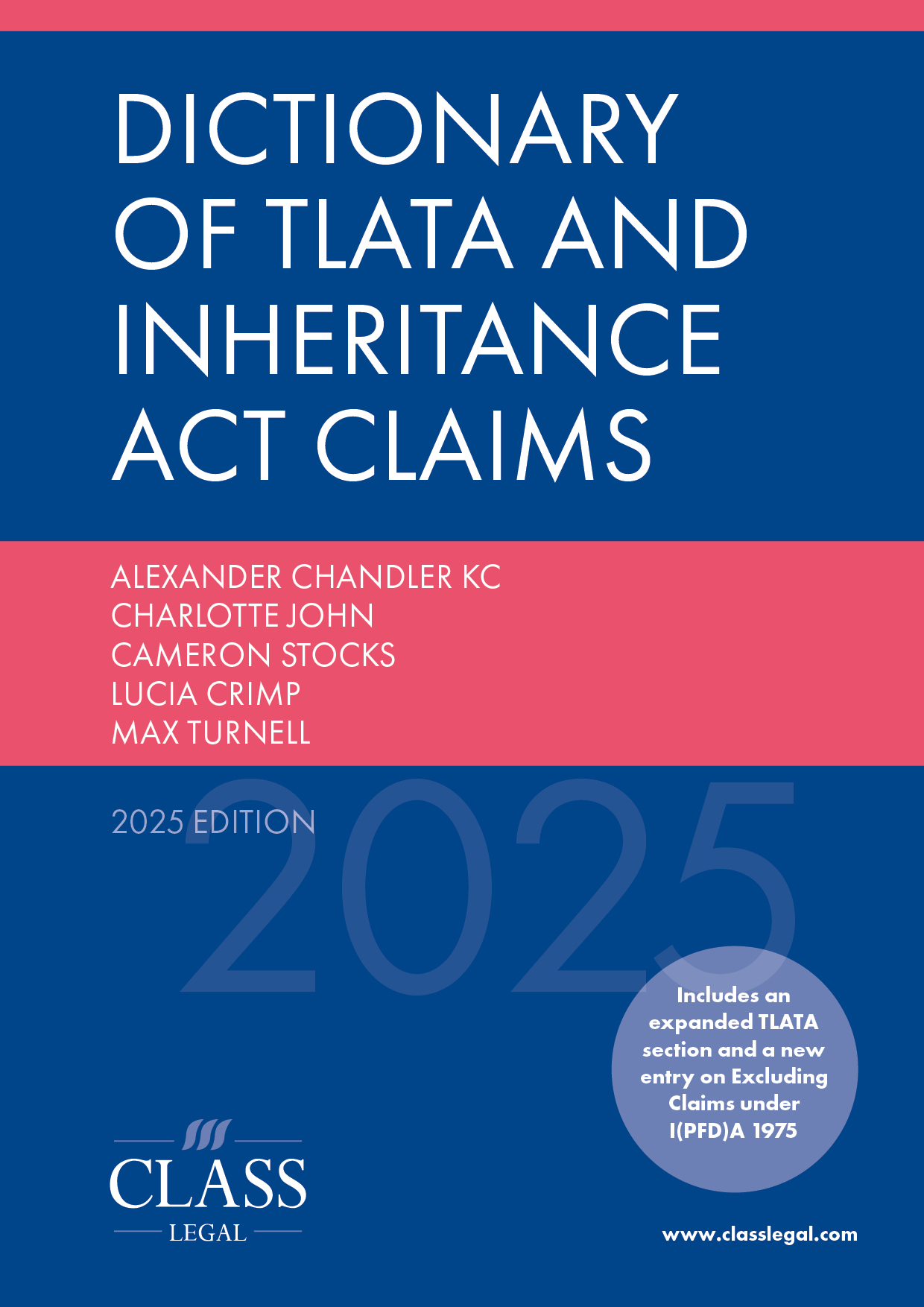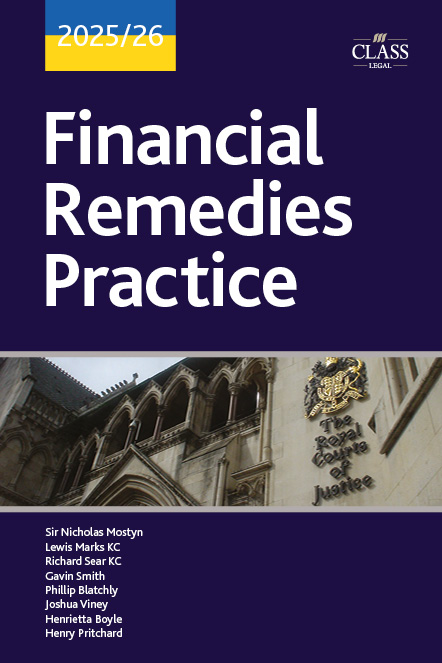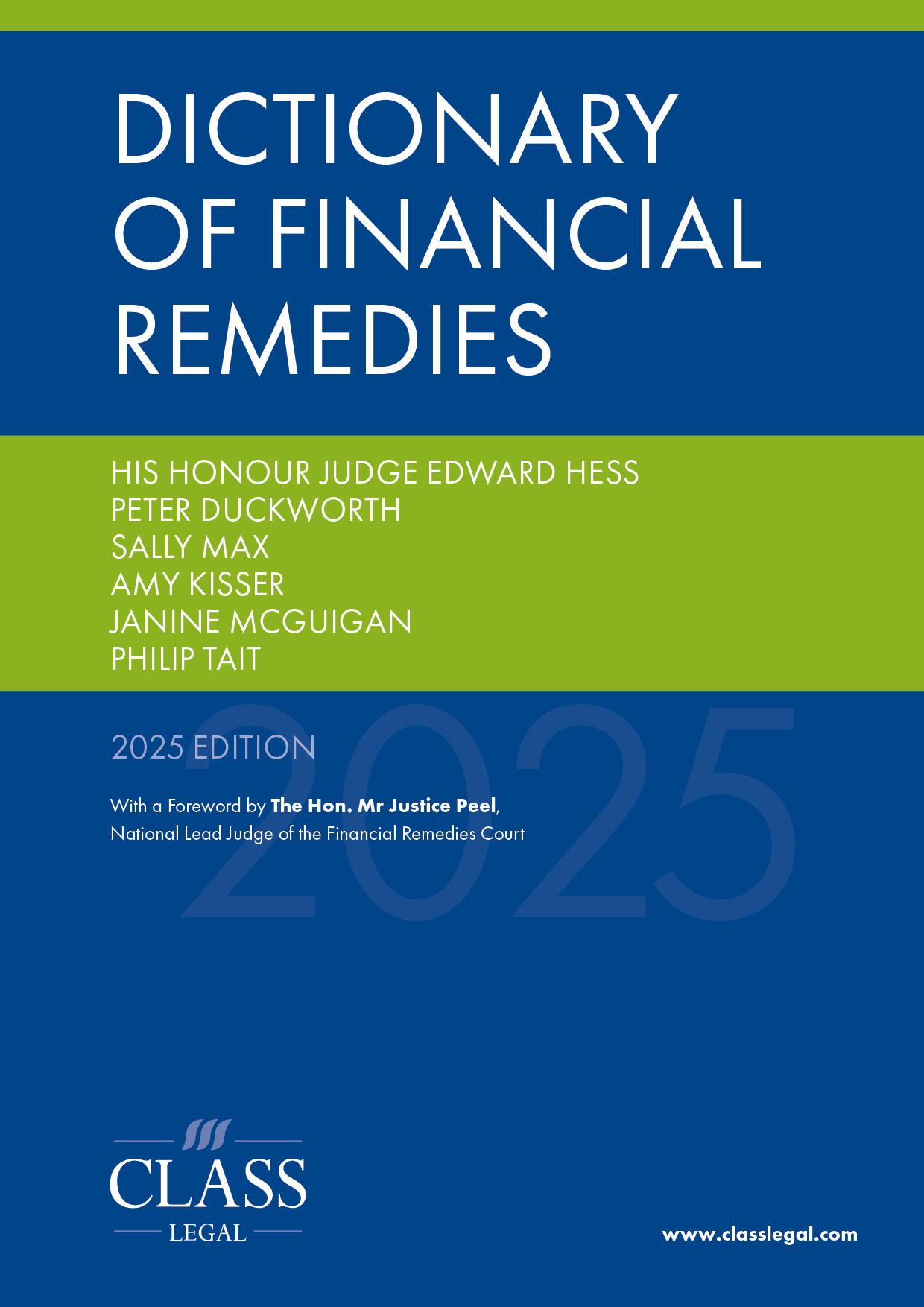
ST v AR: The Origin of Assets and the Assessment of Needs
Published: 01/04/2025 10:20

As Mostyn J observed in Clarke v Clarke [2023] 2 FLR 1 at [36], Peel J’s oft-quoted summary of the law in WC v HC (Financial Remedies Agreements) (Rev 1) [2022] 2 FLR 1110 at [21] is an ‘impeccable synopsis of the jurisprudence applicable in financial remedy cases [which] has become justly famous’. Somewhat more colloquially, Peel J has himself said (with a smile) that he has heard his summary described as ‘the Noddy Guide’ to financial remedies.
At [21](xii) of WC v HC (Financial Remedies Agreements) (Rev 1), Peel J said this:
‘Needs are an elastic concept. They cannot be looked at in isolation. In Charman [v Charman (No. 4) [2007] 1 FLR 1246] at [70] the court said:
“The principle of need requires consideration of the financial needs, obligations and responsibilities of the parties (s.25(2)(b)); of the standard of living enjoyed by the family before the breakdown of the marriage (s.25(2)(c)); of the age of each party (half of s.25(2)(d); and of any physical or mental disability of either of them (s.25(2)(e)).”’
At [21](xv), Peel J continued as follows:
‘[the] standard of living is not an immutable guide. Each case is fact specific. As Mostyn J said in FF v KF [2017] EWHC 1093 at [18]:
“The main drivers in the discretionary exercise are the scale of the payer's wealth, the length of the marriage, the applicant's age and health, and the standard of living, although the latter factor cannot be allowed to dominate the exercise.’”
The views expressed by Mostyn J are not dissimilar to those articulated by Moylan J (as he then was) in BD v FD (Financial Remedies: Needs) [2017] 1 FLR 1420 at [113]:
‘Subject to first consideration being given to the welfare of minor children, the principal factors which impact on the court's assessment of needs are:
(i) the length of the marriage;
(ii) the length of the period, additional to (i), during which the applicant spouse will be making contributions to the welfare of the family;
(iii) the standard of living during the marriage;
(iv) the age of the applicant; and
(v) the available resources as defined by section 25(2)(a).’
Taken together, it might be said, the decisions in Charman v Charman, BD v FD (Financial Remedies: Needs) and FF v KF appear to suggest that any assessment of needs might reasonably be informed by consideration of most or all of the other section 25 criteria. But what is the relevance, if any, of ‘contributions’ (within the meaning of section 25(2)(f)) by way of pre-acquired and/or inherited non-matrimonial property?
In WC v HC (Financial Remedies Agreements) (Rev 1), at [21](xvi), Peel J said this:
‘I would add that the source of the wealth is also relevant to needs. If it is substantially non-marital, then in my judgment it would be unfair not to weigh that factor in the balance. Mostyn J made a similar observation in N v F (Financial Orders: Pre-Acquired Wealth) [2011] 2 FLR 533, at paras [17]–[19].’
The ‘observation’ of Mostyn J in N v F (Financial Orders: Pre-Acquired Wealth) was as follows:
‘[17] [In McCartney v Mills McCartney [2008] 1 FLR 1508] needs … were assessed only by reference to the vast scale of the husband's resources, and the marital standard of living. But there have been instances of needs being informed by factors other than these … In M v M (Prenuptial Agreement) [2002] 1 FLR 654 Connell J pared the wife's needs down because she had signed a pre-nuptial agreement (see para [44]). This is what Baron J did in Granatino at first instance [NG v KR (Prenuptial Contract) [2009] 1 FLR 1478] …
[18] Thus [and with the subsequent approval of the Court of Appeal and the Supreme Court] the husband's needs were cut right down to a level that would have been inconceivable had there been no pre-nuptial agreement. One of the reasons that public policy demanded such rigour to be imposed on the husband was that the pre-nuptial agreement was intended to preserve the wife's non-matrimonial property …
[19] So if an agreement to preserve non-matrimonial property can have the effect of assessing need more conservatively (indeed in Granatino far more conservatively) than would have been the case absent that factor, why cannot the presence of pre-marital property simpliciter not have an equivalent or similar effect? I accept, of course, that in Jones at para [31] Wilson LJ has stated that “… in applying the principles of need and of sharing, the court is engaged in two separate exercises, which require it to refer to different considerations” … [but] I do not take this passage to suggest that assessment of need is an insulated metric uninformed by factors that are centrally key to the performance of the sharing principle …’
This is an argument that has now been considered in ST v AR [2025] EWFC 4 per Her Honour Judge Vincent (sitting as a Deputy High Court Judge). It was advanced by Richard Todd KC (leading Joshua Viney) on behalf of the husband whose position, as recorded at [25], was that ‘where the source of the wealth is non-matrimonial, the assessment [of needs] can (and should) be conservative’.
This submission was made in the context of a case in which at final hearing (as recorded at [20] and [22] respectively) the husband offered to pay the wife a lump sum of £11m (inclusive of a housing fund, capitalised income, costs and a £1.5m contingency fund) less £500,000 for a so-called Charman payment said to have been made on account of the eventual award) and the wife sought circa £22.5m in total, with no credit given for the Charman payment.
The court found the total assets to be circa £142m (gross), of which circa £121m (gross) were the husband’s illiquid/non-matrimonial property, principally derived from an inheritance from his grandparents.
The total award made to the wife was £13.75m – far closer to the husband’s offer than the wife’s – which included a housing fund of £4m, a capitalised income fund of £8m and an ‘enhancement’ award of £1.5m.
Under ‘Conclusions’, Her Honour Judge Vincent described her approach as follows:
‘[166] I have considered the available assets, whether they are matrimonial or not, looked at issues of liquidity and tax, and I have weighed the section 25 factors in the balance. My determination of the level of award is driven by my assessment of the wife's needs. That assessment is informed by the level of resource available to the parties throughout the marriage and which will continue to be available throughout their lifetimes. The standard of living during the marriage was not ostentatious, but was one in which no questions ever had to be asked about affordability. I have taken into account the length of the marriage. A relevant circumstance is the period of cohabitation pre-marriage, which was different in nature from the marriage itself, but did establish patterns within the relationship which continued thereafter, most particularly, that the parties pursued fulfilling and worthwhile vocations, but did not work for financial gain.
[167] All this has led me to assess the wife's needs with what I regard to be a realistic but generous perspective, having regard to the standard of living during the marriage as a reference point.’
Towards the conclusion of her judgment she stated as follows (emphasis added):
‘[223] The award that I have made to the wife does not give her parity with the husband. Of the total pool of liquid and illiquid/non-matrimonial assets, she receives only 9%. This reflects the source of wealth in the marriage comes from the husband's inheritance. The outcome preserves that inheritance for him, and he holds those assets in the same proportion as he did before. However, looking at the assets as a whole, the dial has been moved significantly, from 1% to 9%, in recognition of the section 25 factors as they apply in this case. The award puts the wife in a position to meet all the needs that she could reasonably expect to have, commensurate with the standard of living during the marriage, together with a substantial cushion to cover contingencies, and to put her in the same position as the husband so far as being able to make choices around spending without having too much regard to the consequences.’
ST v AR is notable as one of the first cases, at the date of publication, to cite the Court of Appeal decision in Standish v Standish [2024] 2 FLR 966 (other published cases to which there has been a reference to Standish are RM v WP [2024] EWFC 191 (B) per His Honour Judge Hess, Williams v Williams [2024] EWFC 275 per Moor J, and the Irish High Court case of KCN v PN [2024] IEHC 536 per Jackson J). Standish of course held – per Moylan LJ at [163] – that ‘the concept of matrimonialisation should be applied narrowly’.
Standish is due to be heard by the Supreme Court on 30 April 2025. However, for the moment at least it is authority for the proposition that the source of the assets is important. As a result, as Jessica Reid of Dawson Cornwall LLP observed in her FRJ Blog on ST v AR published on 29 January 2025 – available here – ‘The judge found the concept of matrimonialisation should be narrowly applied when the source of the wealth is non-matrimonial’ and ‘the needs assessment of the wife’s claim was more conservative’.
To date, Mostyn J, Peel J, and Her Honour Judge Vincent have all considered that the assessment of needs can be more conservatively (and perhaps far more conservatively) assessed if the source of the assets is (at least) substantially non-matrimonial in origin with the latter having now put this principle into practice in ST v AR. It will be interesting to see whether this view is endorsed or undermined by the Supreme Court’s decision in Standish.









